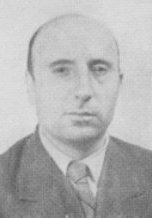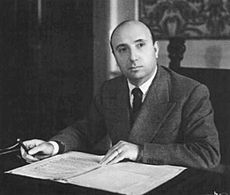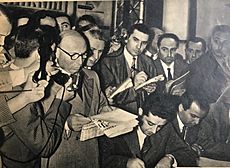Mario Scelba facts for kids
Quick facts for kids
Mario Scelba
|
|||||||||||||||||||||||||||||||||||||||||
|---|---|---|---|---|---|---|---|---|---|---|---|---|---|---|---|---|---|---|---|---|---|---|---|---|---|---|---|---|---|---|---|---|---|---|---|---|---|---|---|---|---|
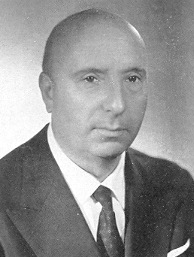 |
|||||||||||||||||||||||||||||||||||||||||
| Prime Minister of Italy | |||||||||||||||||||||||||||||||||||||||||
| In office 10 February 1954 – 6 July 1955 |
|||||||||||||||||||||||||||||||||||||||||
| President | Luigi Einaudi Giovanni Gronchi |
||||||||||||||||||||||||||||||||||||||||
| Preceded by | Amintore Fanfani | ||||||||||||||||||||||||||||||||||||||||
| Succeeded by | Antonio Segni | ||||||||||||||||||||||||||||||||||||||||
| President of the European Parliament | |||||||||||||||||||||||||||||||||||||||||
| In office 11 March 1969 – 16 March 1971 |
|||||||||||||||||||||||||||||||||||||||||
| Preceded by | Alain Poher | ||||||||||||||||||||||||||||||||||||||||
| Succeeded by | Walter Behrendt | ||||||||||||||||||||||||||||||||||||||||
|
|||||||||||||||||||||||||||||||||||||||||
|
|||||||||||||||||||||||||||||||||||||||||
| Personal details | |||||||||||||||||||||||||||||||||||||||||
| Born | 5 September 1901 Caltagirone, Sicily, Kingdom of Italy |
||||||||||||||||||||||||||||||||||||||||
| Died | 29 October 1991 (aged 90) Rome, Italy |
||||||||||||||||||||||||||||||||||||||||
| Political party | Christian Democracy | ||||||||||||||||||||||||||||||||||||||||
| Spouse |
Nerina Palestini
(m. 1929) |
||||||||||||||||||||||||||||||||||||||||
| Children | 1 | ||||||||||||||||||||||||||||||||||||||||
| Alma mater | Sapienza University of Rome | ||||||||||||||||||||||||||||||||||||||||
Mario Scelba (born September 5, 1901 – died October 29, 1991) was an Italian politician. He served as the 33rd Prime Minister of Italy from February 1954 to July 1955. Scelba was one of the people who helped start the Christian Democracy party. He was also one of the longest-serving Ministers of the Interior in Italy's history. He held this important job three times between 1947 and 1962. Mario Scelba strongly supported European unity. He was also the President of the European Parliament from March 1969 to March 1971.
Scelba was known for his strong focus on keeping law and order. He played a key role in rebuilding Italy after World War II. He helped to reorganize the Italian police force, which was very disorganized after the war.
Contents
Early Life and Education
Mario Scelba was born in Caltagirone, Sicily, in 1901. His father was a poor farmer, and his mother was a homemaker. Mario grew up in a religious Catholic family. When he was 12, he had to leave school to help his family earn money. However, in 1914, a priest named Don Luigi Sturzo helped him get back to school.
Scelba studied hard and finished high school in 1920. He then went to Sapienza University of Rome to study law. He graduated in 1924. During his time at university, Don Sturzo chose him to be his personal assistant and secretary. Don Sturzo was a very important politician and leader of the Italian People's Party.
When the dictator Benito Mussolini came to power, he banned all other parties. Don Sturzo had to leave Italy. Mario Scelba stayed in Rome and secretly sent information to Sturzo. During this time, Scelba wrote for a newspaper called Il Popolo. When it was banned, he started a secret weekly newspaper. He also began his career as a lawyer. In 1929, he married Nerina Palestini, and they had a daughter named Maria Luisa.
Beginning His Political Journey
In the 1930s, Mario Scelba became good friends with Alcide De Gasperi. De Gasperi was another important leader of the People's Party. Together, they worked on ideas for a new political party. This party would later become the Christian Democracy (DC). In July 1943, they published their first ideas for the new party.
Scelba was part of the group that led the Christian Democracy party when Germany occupied Italy. He was even arrested by the Nazis but was released quickly. After Rome was freed in June 1944, he joined the party's main committee. In 1944, he was chosen as the deputy secretary of the Christian Democracy party.
In September 1943, Scelba joined the National Liberation Committee (CLN). This was a group of different political parties that worked together. They fought against the German occupation of Italy during World War II. On June 21, 1945, Ferruccio Parri became the new Prime Minister. He made Scelba the Minister of Mails and Telecommunications. Scelba held this job until February 1947.
In 1946, Scelba was elected to the Constituent Assembly. This group was responsible for writing Italy's new constitution after the war.
Minister of the Interior: Keeping Order
On February 2, 1947, Mario Scelba became the Minister of the Interior. He held this powerful position until July 1953. During these years, he was one of the most influential people in Italy, second only to Prime Minister Alcide De Gasperi.
Scelba strongly believed that keeping public order was essential for Italy's new democracy. He had seen how political unrest could lead to dictatorship. Because of his firm actions, he was sometimes called the "Iron Sicilian." He took strong steps to maintain order during protests and strikes.
The Portella della Ginestra Event
Just three months after becoming Minister of the Interior, Scelba faced a major challenge. On May 1, 1947, a labor parade in Portella della Ginestra, Sicily, was attacked. Eleven people were killed, and many more were injured. This tragic event was blamed on a bandit leader named Salvatore Giuliano. Some believed the attack was meant to punish left-wing groups for winning recent elections.
Scelba told Parliament that the police believed it was a non-political attack by bandits. However, others, especially from left-wing parties, said it was a political act. They claimed that the Mafia was involved. The trial for those responsible began in 1950. During the trial, there were accusations against Scelba, but these were not proven. The judge decided that the Giuliano group acted on its own.
The 1948 Election
The general election in April 1948 was very important. It happened during the Cold War between the Soviet Union and the United States. The US was worried that if left-wing parties won, Italy might become too close to the Soviet Union.
The election campaign was very intense. Christian Democracy warned that if communists won, it would be bad for Italy. As Minister of the Interior, Scelba announced that the government had many police officers ready to keep order on election day. The Christian Democracy party won the election. After this, Prime Minister De Gasperi continued to govern without the communist party. Scelba remained Minister of the Interior.
Rebuilding the Police Force
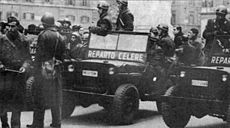
During his time as minister, Scelba greatly reorganized the Italian police. He removed over 8,000 former partisans who were accused of being communist supporters. When he first took office, the police force was in poor shape. He worked to make it a strong force of about 100,000 officers. He also created a special riot squad called the Reparto Celere (meaning "Fast Department"). This squad was well-equipped to handle public disturbances.
Scelba was known for taking firm action against what he saw as disorder. Some people, even within his own party, criticized his strict methods. In 1952, he helped create the "Scelba law." This law made it a crime to promote fascism.
Despite his focus on law and order, Scelba also cared about social issues. He supported social reforms and public works projects. He believed that improving people's lives could help reduce political tensions. He once said it was hard to be Minister of the Interior if the government didn't care about people having jobs.
Becoming Prime Minister
The 1953 general election had a new rule. It said that the group of parties that won more than half the votes would get a large number of seats in Parliament. This rule was very controversial. Many opposition parties called it the Scam Law.
The government parties did not quite reach the needed number of votes for the special bonus. They still won the election and had enough seats to govern. However, the failure to get the super-majority caused problems within the ruling coalition. Prime Minister De Gasperi had to resign. After a short period with another Prime Minister, Mario Scelba was asked to form a new government.
On February 10, 1954, Scelba became the new Prime Minister. He led a government made up of the Christian Democracy party and two other smaller parties.
As Prime Minister, Scelba worked to strengthen Italy's ties with the United States and NATO. He also helped solve a difficult issue about the Free Territory of Trieste. This area was disputed between Italy and Josip Tito's Yugoslavia after the war. Scelba chose a diplomatic approach. On October 5, 1954, an agreement called the "London Memorandum" was signed. This agreement gave the city of Trieste to Italy and another part of the territory to Yugoslavia.
During his time as Prime Minister, the Portella della Ginestra event came up again. On February 9, 1954, Gaspare Pisciotta, who was involved in the massacre, was found dead in his prison cell. He had said he would tell the full truth about the event. The cause of his death was poison. Some suggested the government or the Mafia were involved, but no one was ever charged.
In August 1954, Scelba's government introduced a plan to build affordable public housing. This was part of his focus on social improvements.

In April 1955, Giovanni Gronchi was elected the new President of Italy. Scelba offered his government's resignation to the new president, which is a common courtesy. However, President Gronchi accepted the resignation, which led to a political crisis. Scelba eventually stepped down, and Antonio Segni became the new Prime Minister on July 6, 1955. Scelba believed he was forced out by political rivals within his own party.
After Being Prime Minister
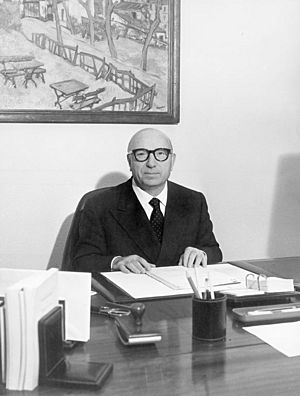
After leaving the Prime Minister's office, Scelba's influence in his party decreased. In 1958, he formed his own group within the Christian Democracy party. This group was called Centrismo popolare (People's Centrism) and was made up of more conservative politicians. This group lasted until 1968.
On July 26, 1960, Scelba was again appointed Minister of the Interior. He returned to this role to help restore public order during violent demonstrations. He also dealt with tensions in South Tyrol, where there had been bombing attacks by separatist groups. Scelba took special measures to keep peace and order. He also set up a commission to find ways for different language groups to live together. He remained Minister of the Interior until February 1962.
For the rest of his political career, Scelba often disagreed with other Christian Democratic leaders. They wanted to work more closely with the Socialist Party, but Scelba preferred more central policies.
Scelba was a strong supporter of European integration. He was a member of the European Parliament from 1960 to 1979. He served as President of the European Parliament from 1969 to 1971. He was the third Italian to hold this important position. In 1979, he ran in the first European election but was not elected.
In 1983, Mario Scelba retired from politics.
Later Life and Legacy
Mario Scelba passed away on October 29, 1991, at the age of 90, in his home in Rome.
Within the Christian Democracy party, Scelba represented the traditional values of the People's Party. He believed in democratic Catholicism and was against fascism. He strongly supported Alcide De Gasperi in building a democratic system in Italy after the war. Even though he was a devout Catholic, Scelba believed that the state should be separate from the Catholic Church.
Scelba is best remembered for his strong policies on law and order. Some historians have criticized his strict methods. However, others, like journalist Indro Montanelli, believed that Scelba's reorganization of the police greatly reduced political crimes and made citizens safer.
Electoral History
| Election | House | Constituency | Party | Votes | Result | |
|---|---|---|---|---|---|---|
| 1946 | Constituent Assembly | Catania–Messina–Siracusa–Ragusa–Enna | DC | 39,587 | ||
| 1948 | Chamber of Deputies | Catania–Messina–Siracusa–Ragusa–Enna | DC | 223,005 | ||
| 1953 | Chamber of Deputies | Catania–Messina–Siracusa–Ragusa–Enna | DC | 181,084 | ||
| 1958 | Chamber of Deputies | Catania–Messina–Siracusa–Ragusa–Enna | DC | 150,048 | ||
| 1963 | Chamber of Deputies | Catania–Messina–Siracusa–Ragusa–Enna | DC | 126,414 | ||
| 1968 | Senate of the Republic | Acireale | DC | 37,966 | ||
| 1972 | Senate of the Republic | Acireale | DC | 40,592 | ||
| 1976 | Senate of the Republic | Acireale | DC | 45,871 | ||
| 1979 | Senate of the Republic | Caltagirone | DC | 29,465 | ||
| 1979 | European Parliament | Italian Islands | DC | 199,050 | ||
Images for kids
-
Mario Scelba with Prime Minister Alcide De Gasperi during the 1950s
See also
 In Spanish: Mario Scelba para niños
In Spanish: Mario Scelba para niños


